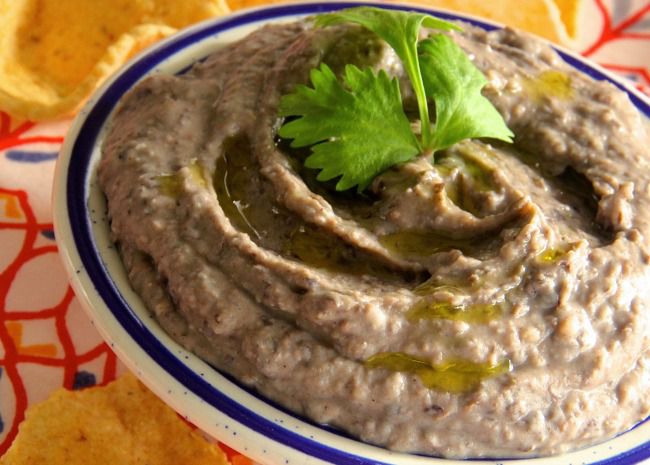For many of us, growing vegetables at home is starting to sound more and more appealing. It saves you a trip to the grocery store, and it’s a great way to put your green thumb to work. But if you think living in an apartment (like me) or not having a yard counts you out, think again! With a little care, growing plants indoors is easy. Here’s everything you need to know about growing plants indoors, plus our list of the best vegetables to grow in your indoor garden.
Tips for Growing Vegetables Indoors
To start, find a container that’s large enough for the roots of your plant to grow, that also has a drainage hole the bottom. You can DIY your own container by repurposing old plastic yogurt tubs or storage bins, but any pot with a drainage hole will do. Of course, you’ll need to put your container on a dish, saucer, or tray to capture any moisture that drains out so you don’t ruin a table or windowsill.
Plant your veggies or seeds in your container using indoor potting soil, which is specially formulated to help plants grow in indoor conditions. Once you’ve got your plants ready to go, set them up in front of a sunny window.
The biggest challenge to growing vegetables indoors is going to be the lack of light. That’s why it’s important to emulate the conditions of the outdoors as best as possible, by either using window light or investing in grow lights (you can get some from Home Depot for as little as $47). Vegetables will need at least four to six hours of sunlight per day, while fruits will require eight to ten hours per day.
When it comes time to water your plant, less is more. Because they’re not subject to intense outdoor heat, they will not dry out as frequently, so be careful not to overwater. You want to keep the soil moist, but not damp or dry.
Low humidity can be tough on indoor plants, so either use a spray bottle to mist them with water each day, or consider investing in a cool-mist humidifier.
Even without grow lights, expect to see some sprouts fairly quickly. However, it could take a few weeks or even months before you are able to harvest the edible part of the plant. Summer is the best time of year to grow, as you’ll have the most natural light available. However, indoor vegetables can grow year-round, bringing cheer even during the dreary winter months.
Regrowing Vegetables From Scraps

If growing potted vegetables indoors sounds like a little more work than you’re looking to do, there’s an even easier way to grow some types of vegetables in your own home: Try regrowing them from scraps.
Green onions, lettuce, and celery are all great candidates for regrowing from scraps. Simply add the scraps to a container, allow the bottoms to soak in water, and give them plenty of natural light. Before you know it, you’ll have an endless supply of these vegetables growing in your own home.
9 Best Vegetables to Grow Indoors
Make it easy on yourself by choosing plants that do best indoors. These vegetables have proven successful:
1. Carrots
Carrots don’t require much space around them (or wingspan you could say), but they do tend to require deeper soil than other vegetables. They’re cool-tolerant vegetables that thrive at about 60 degrees F. Make sure they get plenty of light, at least 12 hours a day.
2. Green Onions/Scallions
Green onions do well indoors because they’re easy to care for and don’t require as much sunlight as some other veggies. You can either use seeds or you can simply replant the root end of the green onions after using the top.
3. Herbs
Herbs (a subset of vegetables) love the sunshine, so you’re going to have to make sure they get a lot of it: 12-16 hours a day. They tend to do best around 70 degrees F. Some of the best varieties for indoor growing include: chives, parsley, cilantro, oregano, mint, rosemary, sage, and thyme.
4. Hot Peppers
Pepper plants are tropical perennials, meaning they thrive in warm weather and full sun. But because they’re self-pollinating, they can do quite well indoors. They need high levels of light—between 14-20 hours a day—and thrive at about 70 degrees F. Pot them in a container that’s at least eight inches tall, and allow the soil to dry out between waterings.
5. Leafy Salad Greens
Maybe the most reliable of the bunch are cool-tolerant leafy salad greens like spinach, kale, and arugula. They’ll grow in as quickly as four weeks in compact spaces. They need about 12 hours of sunlight per day, and they do well at around 60 degrees F.
6. Microgreens
Don’t let their size fool you, microgreens are packed with 40 times more vitamins and nutrients than fully grown plants. You’ll grow them the same way you would leafy salad greens, but you’ll harvest them when they’re just about two to three weeks old. Try adding them to sandwiches for a nutritious crunch.
7. Potatoes
This one may surprise you, but you can grow potatoes (both sweet and regular) in soil from scraps. Start with a sprouted potato and cut it up into chunks, laying them out sprout-side-up on at least four inches of soil. Top them off with another four inches of soil, and in about two months, you’ll have potatoes! Make sure you have a large enough pot, because these can get quite large and you may have to continue adding soil as they grow to ensure that the potatoes are always covered.
8. Radishes
Radishes are quick growers, with only 30 to 40 days from germination to harvest. They won’t need as much light as many other veggies, but make sure they’re not too crowded so their bulbs can grow.
9. Tomatoes
Tomatoes are a warm-weather loving plant, but that doesn’t mean they’re hopeless indoors. They’ll need a lot of light, about 14 to 20 hours a day. Like peppers, they’re self-pollinating, but you can also shake them to help the pollen fall from flower to flower. Smaller varieties tend to do better in containers, and you’ll find the seeds germinate fairly quickly.




